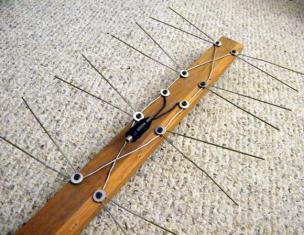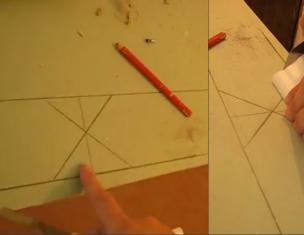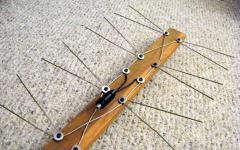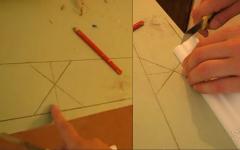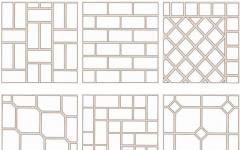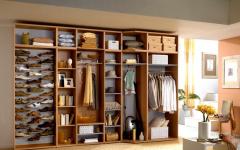Thanks to its affordable price and beautiful design, vinyl wallpaper has become one of the most popular wall decoration options.
Vinyl wallpaper is a two-layer material, the bottom layer is made of paper or non-woven fabric, and the top layer is made of polyvinyl chloride, on which embossing and drawings are applied during the pouring process. In some types of vinyl wallpaper, an inner layer is added to hide irregularities. The process of sticking vinyl wallpaper is quite simple, so it is quite possible to do it yourself. How to glue vinyl wallpaper, read our article.
Layers of vinyl wallpaper
Like any building and finishing material, vinyl wallpaper has its positive and negative qualities.
Advantages
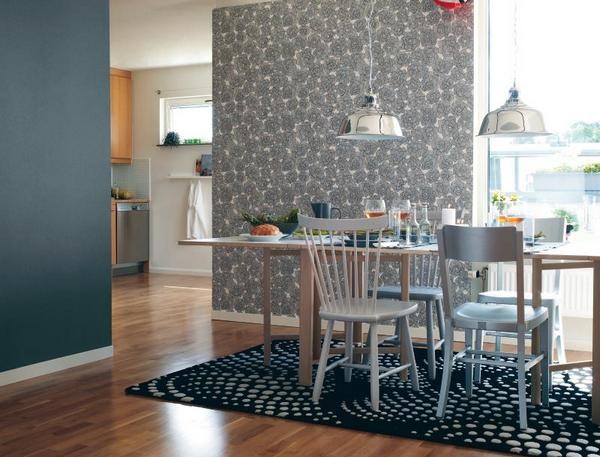 Vinyl wallpaper for the kitchen is not afraid of moisture
Vinyl wallpaper for the kitchen is not afraid of moisture - High strength.
- The ability to hide small wall defects due to the high density.
- Resistant to chemicals used in household detergents. Washable vinyl wallpaper is one of the most popular types today. Related article: .
- Use of vinyl wall-paper even in damp rooms.
If a decision is made to finish the walls without leveling with plasters, plywood or chipboard, then a foamed version of vinyl wallpaper can be used to mask irregularities.
disadvantages
In addition to the advantages listed above, vinyl wallpaper also has disadvantages.
- The main disadvantage of vinyl wallpaper is the linear expansion coefficient. It determines the ability of the material to expand when moisture enters and narrow when it dries, so there is a chance that the joints between the strips will disperse.
- Paper-based vinyl wallpapers do not tolerate changes in humidity and temperature, so you should not stick them in rooms such as kitchens, toilets, bathrooms.
- Another significant disadvantage: the material does not allow air to pass through, so it is not recommended to use it in nurseries, bedrooms and other rooms where air exchange is very difficult.
- And the last minus is an unpleasant pungent smell.
Attention! For many rooms, non-woven vinyl wallpapers are the best option (this is paper treated with special protective compounds using a unique technology). It is important to remember that when sticking such wallpaper, the glue is not applied to the material, but to the surface of the wall. If this is an option for painting, then glue is applied to both canvases and walls.
The main types of vinyl wallpaper
Vinyl wallpaper manufacturers offer two main types:
- hot embossed wallpaper;
- wallpaper with silkscreen.
 Combination of silk screen printing of several types
Combination of silk screen printing of several types
Each of them is divided into subspecies, which differ from each other in thickness and appearance. For example, hot embossed wallpapers have three varieties:
- compact (a distinctive feature is imitation of finishes: stone, plaster, brick);
- heavy (they can hide medium and small surface defects);
- with chemical embossing (characterized not only by high strength, but also by high resistance to UV rays).
Steps of the sticker process
When buying vinyl wallpaper, you need to make sure of the following.
- All purchased wallpaper rolls bear the same batch number.
- From the outside, the rolls do not differ in shades.
- The plastic packaging is not torn or wrinkled.
- Available.
After you have opened at least one roll, it is no longer subject to return to the point of sale! You will have to buy more or use defective material.
Preparatory stage
First of all, we pay attention to the glued surface. It should be smooth and clean, without major defects. If the flaws are large enough, they will need to be repaired with putty. Too crooked walls are also corrected with drywall and plaster.
Articles in the topic: and.
A prerequisite is the primer of the walls. The primer will not only create a surface with a high degree of adhesion, but also strengthen the top layer of the wall. Now you can cut the strips of wallpaper to the required size and prepare the glue.
Sticking vinyl wallpaper
We'll give you a few tips right away.
- First, vinyl wallpaper is glued end-to-end.
- Secondly, it is better to apply glue simultaneously on the walls and on the finishing material.
- Thirdly, when sticking it is important not to stretch the wallpaper.
- Fourth, when leveling, do not forget to remove air and glue from under the strips.
The process of sticking vinyl wallpaper itself is almost no different from other types, we wrote about it in. 
FAQ
 Popular paintable vinyl wallpaper
Popular paintable vinyl wallpaper - Can vinyl wallpaper be painted? If this is a type of wallpaper made for painting, then no problem. By the way, this material can withstand up to fifteen layers of paint.
- Which wallpaper is better, vinyl or non-woven? We list the advantages of non-woven wallpaper. They are single-layer, breathable, when they are glued, only the wall is processed with glue. This is a fairly durable material. In addition, manufacturers produce both decorated wallpaper and paintable.
- How to remove vinyl wallpaper during the renovation process? There are several options, but in any case, first of all, you will have to destroy the top vinyl layer. We advise you to use a drill with a nozzle in the form of a metal brush, a manual metal brush, a special tool "wallpaper tiger", a needle roller, a spatula, a knife. The bottom paper layer will have to be moistened and removed with a spatula.
- Does a draft affect the wallpapering process? Yes, it does because of the rapid drying of the wallpaper: their edges peel off the surface. Therefore, in the process of work, be sure to close windows and doors.
- Which manufacturer's wallpapers are considered the best? The choice is actually not easy, but a large number of specialists today prefer foreign brands. Unfortunately, domestic manufacturers still cannot boast of such quality. And even the closest neighbors - the Ukrainian factory "Edem" - are inferior to the Germans and Italians. We can recommend the German brand "RASCH" or Zambaiti (Italy), or the Belgian "GRANDECO". These names already speak of high quality and guarantees.
So, having learned a lot of useful information about vinyl wallpaper and how to stick it, you can easily make repairs yourself!



